Introduction to Web Services презентация
Содержание
- 2. Agenda
- 3. What is Web Service ? Web service - a software system,
- 4. What is Web Service ? SOA - Service Oriented Architecture of
- 5. Main Web Services protocols SOAP (Simple Object Access Protocol) is based
- 6. RPC Remote Procedure Call Other approaches with nearly the same
- 7. Main Web Services protocols SOAP–services - are focused on actions -
- 8. SOAP - services SOAP-services publish the “contract” (set of methods, parameters
- 9. How does a WebService work?
- 10. SOAP request and response <SOAP-ENV:Envelope><br> xmlns:SOAP-ENV="http://[soaporg]/envelope" SOAP-ENV:encodingStyle="http://[soapporg]/encoding//" <SOAP-ENV:BODY> <m:GetStockRespense xmlns:m="SOME-URL">
- 11. REST - services REST-services publish the data source Client sends
- 12. REST REST (Representational state transfer) - very simple interface without any
- 13. Windows Communication Foundation The main technology for building Web Services .NET
- 14. Web Services Architecture The architecture allows multiple web services to be
- 15. Web Services Architecture The web services architecture has three distinct roles:
- 16. Standards Web Services based on 3 main standarts: SOAP - messaging
- 17. Example: MSDI description of web service
- 18. WS Inspection WS Inspection is based on WSIL (Web Services Inspection
- 19. WSIL document
- 20. Advantages and disadvantages Advantages of Web Services Web services provide cooperation
- 21. Design methodologies Automated tools can help in the creation of a
- 22. Example Web Services for the developer: File web-service has an extension
- 23. Example Create a new application in VS.NET and add to it
- 24. Example On the Web service page: the name of a Web
- 25. WebMethod attribute WebMethod attribute has six properties that affect the web-method:
- 26. WebMethod attribute TransactionOption. Web-service limits support transactions. With this property we
- 27. WebMethod attribute BufferResponse. BufferResponse property allows you to manage web-buffered response
- 28. Questions?
- 29. Скачать презентацию
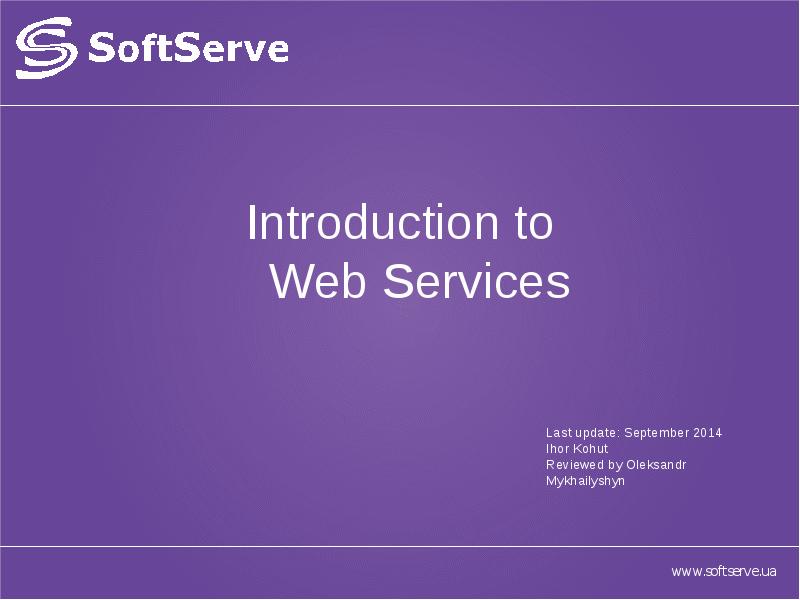




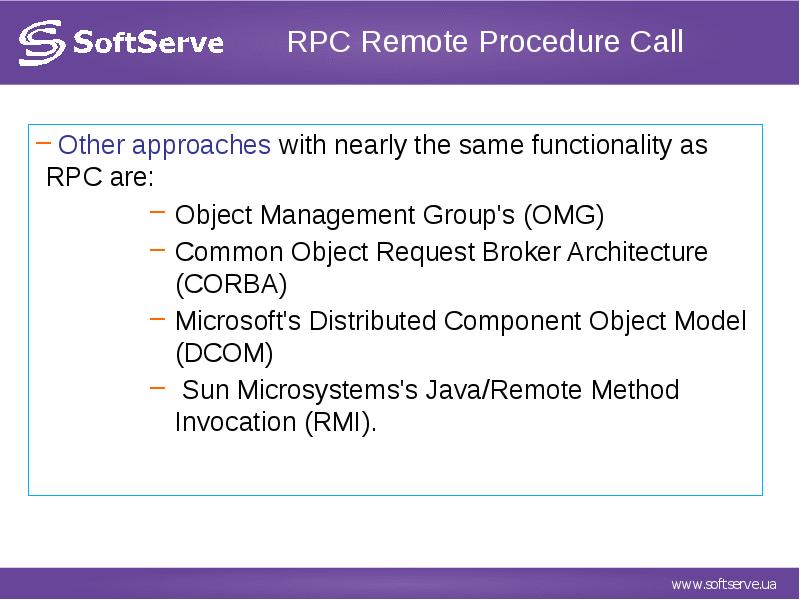



![SOAP request and response
<SOAP-ENV:Envelope><br>
xmlns:SOAP-ENV="http://[soaporg]/envelope"
SOAP-ENV:encodingStyle="http://[soapporg]/encoding//"
<SOAP-ENV:BODY>
<m:GetStockRespense xmlns:m="SOME-URL">
SOAP request and response
<SOAP-ENV:Envelope><br>
xmlns:SOAP-ENV="http://[soaporg]/envelope"
SOAP-ENV:encodingStyle="http://[soapporg]/encoding//"
<SOAP-ENV:BODY>
<m:GetStockRespense xmlns:m="SOME-URL">](/documents_3/86b116ddf26e1eb10638c948232d670c/img9.jpg)
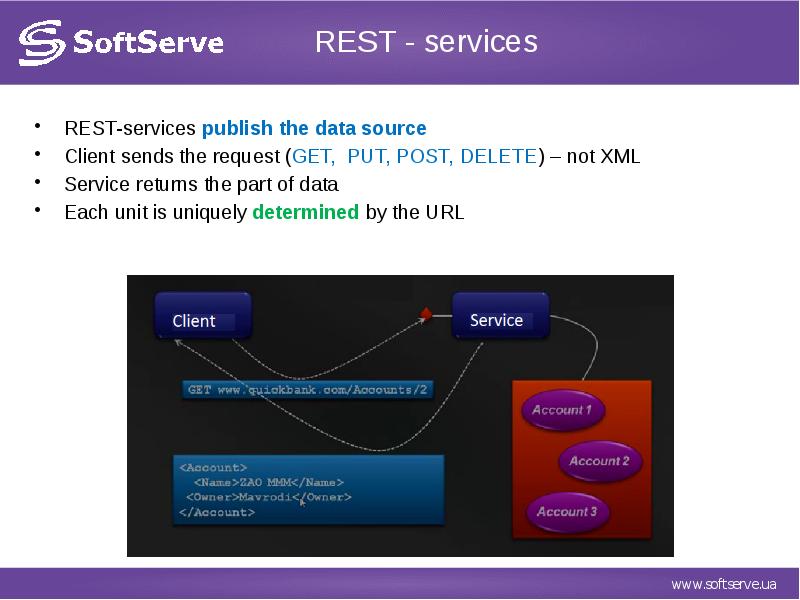
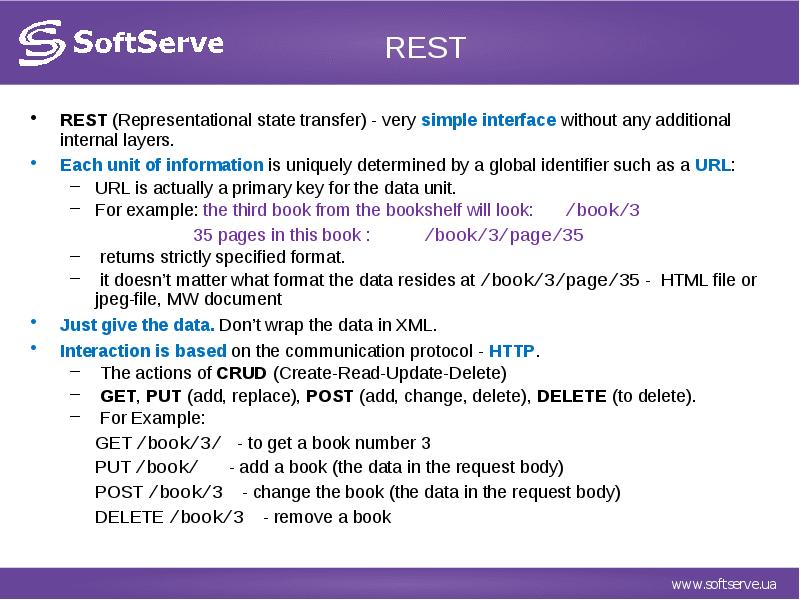
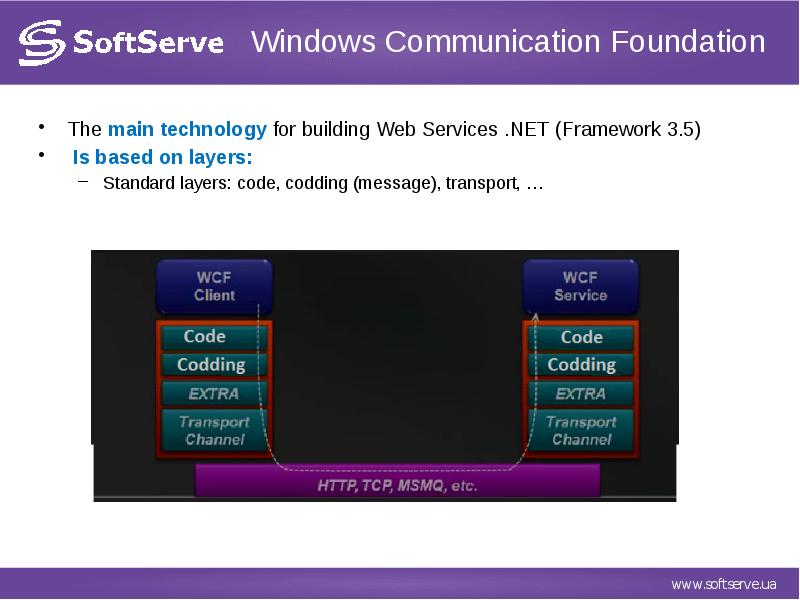
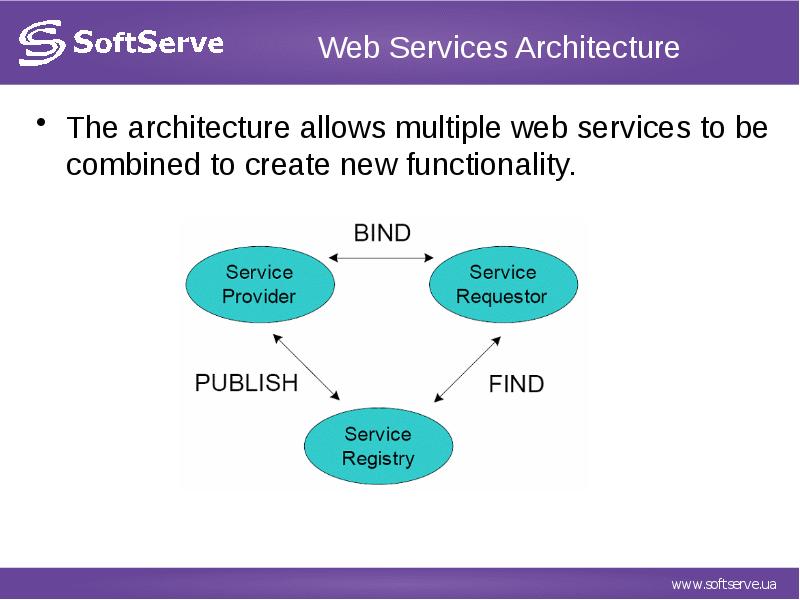


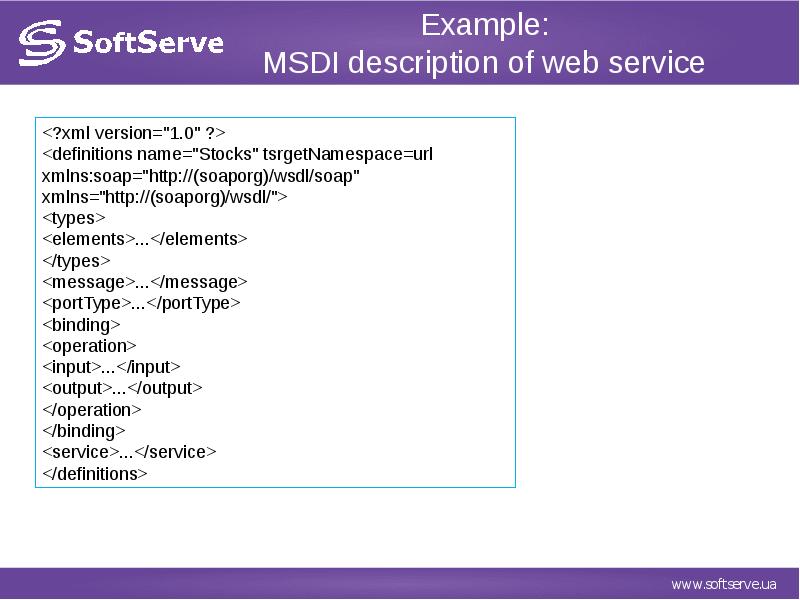
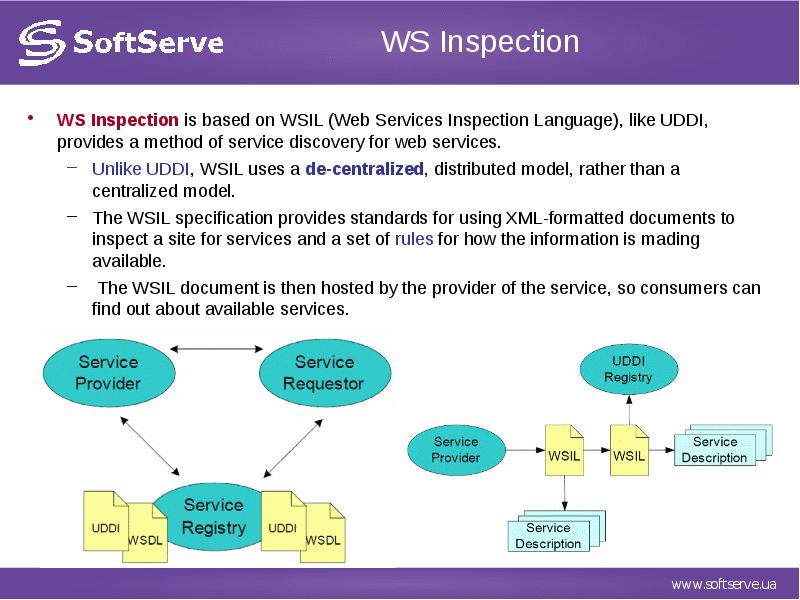
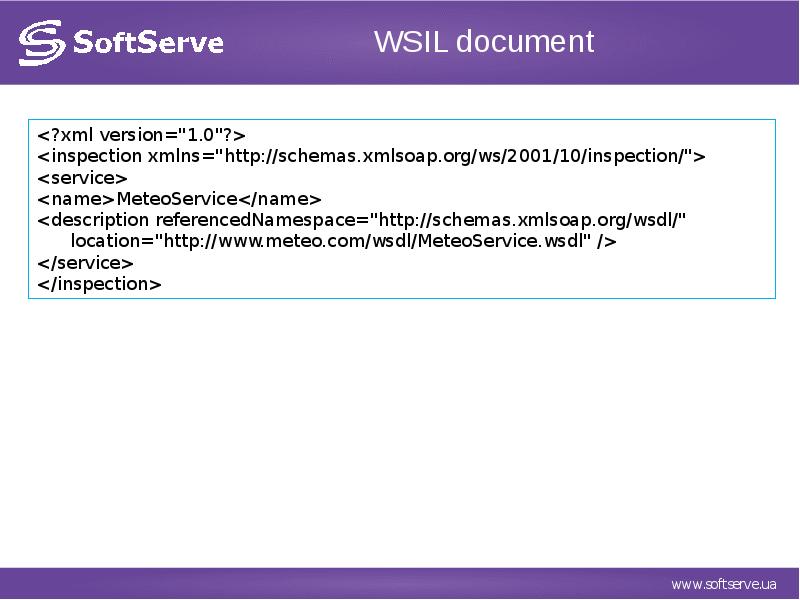
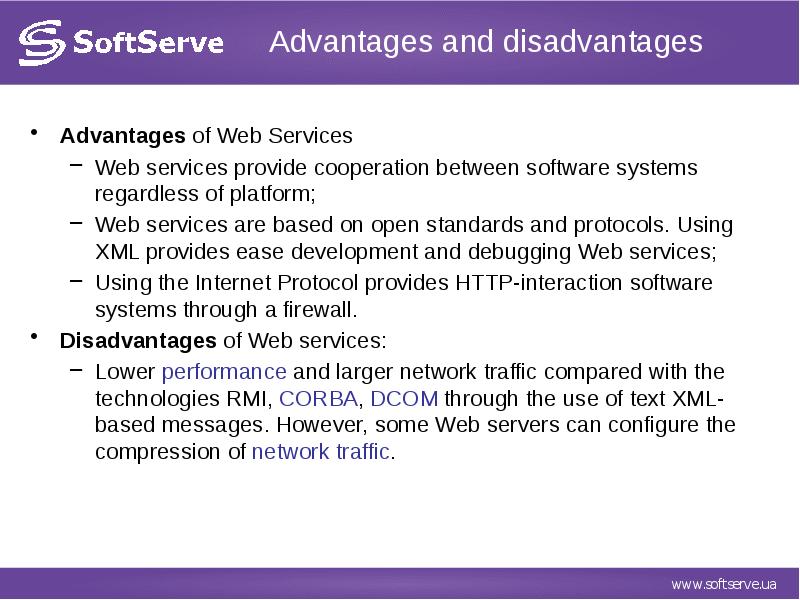
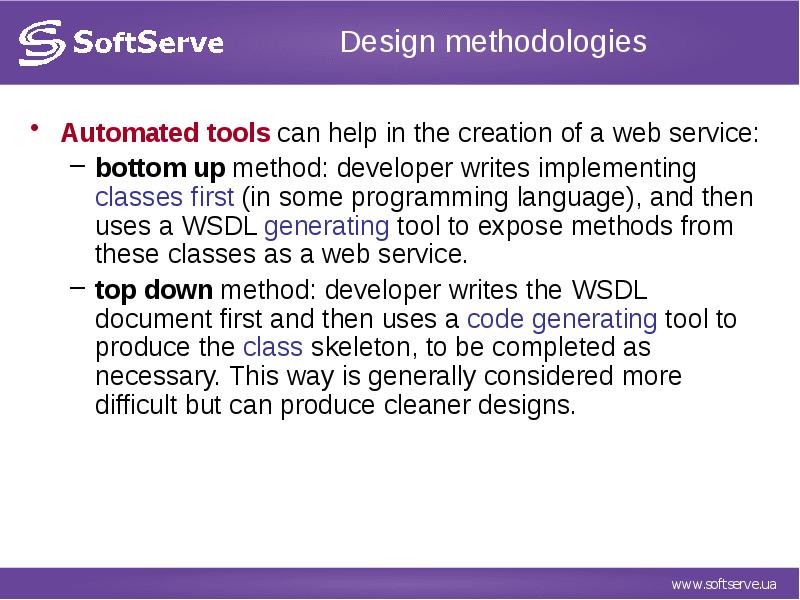
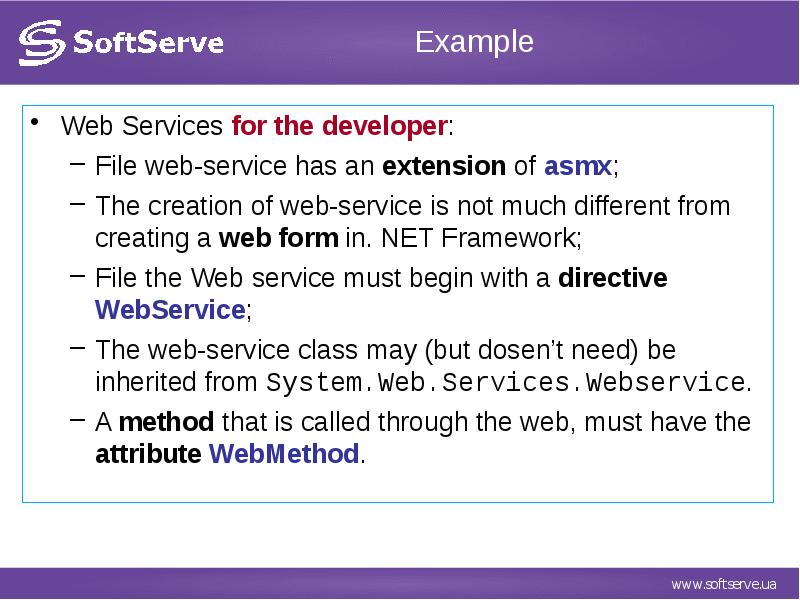


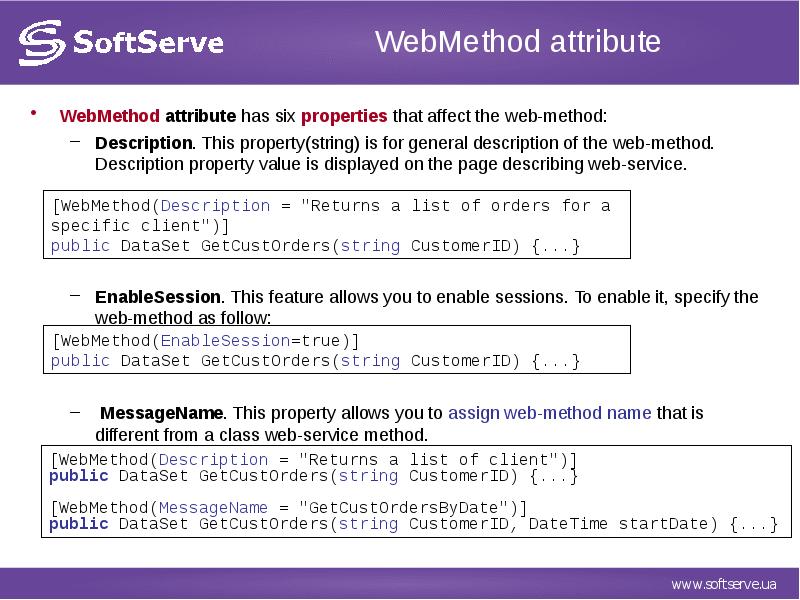
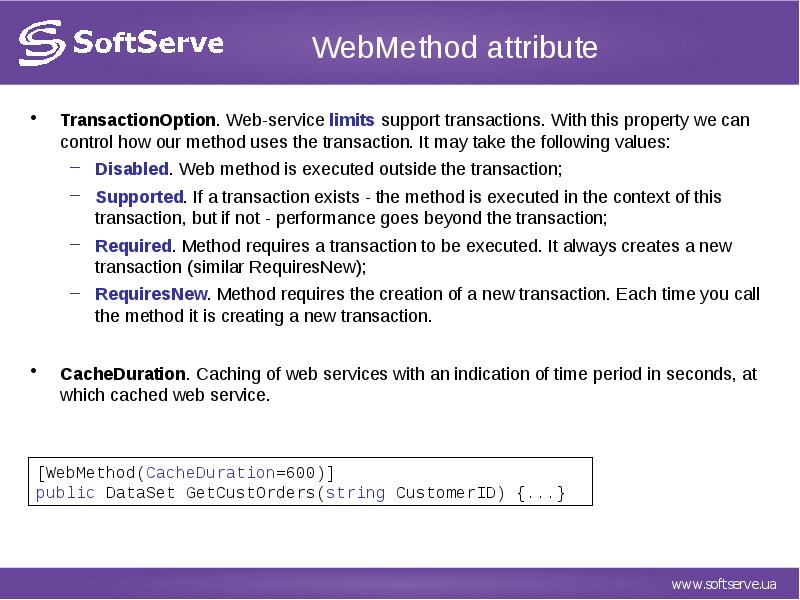
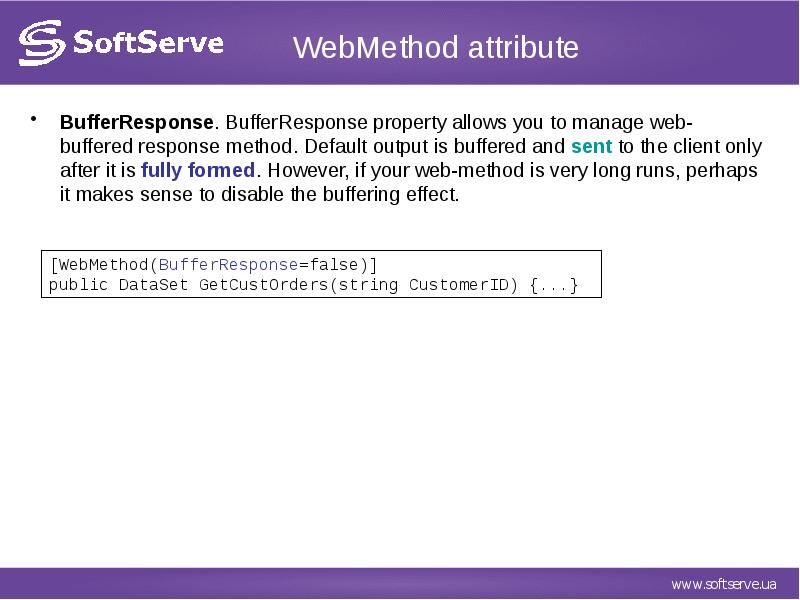
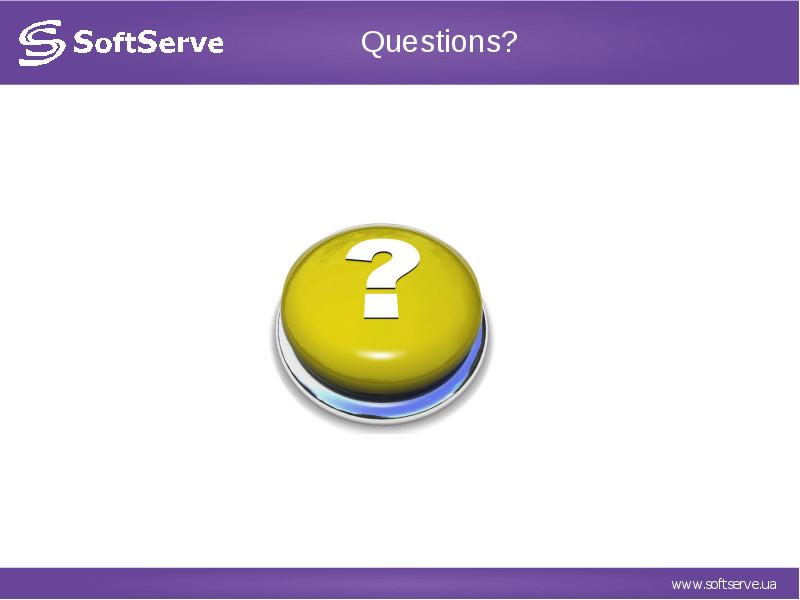
Слайды и текст этой презентации
Похожие презентации





























